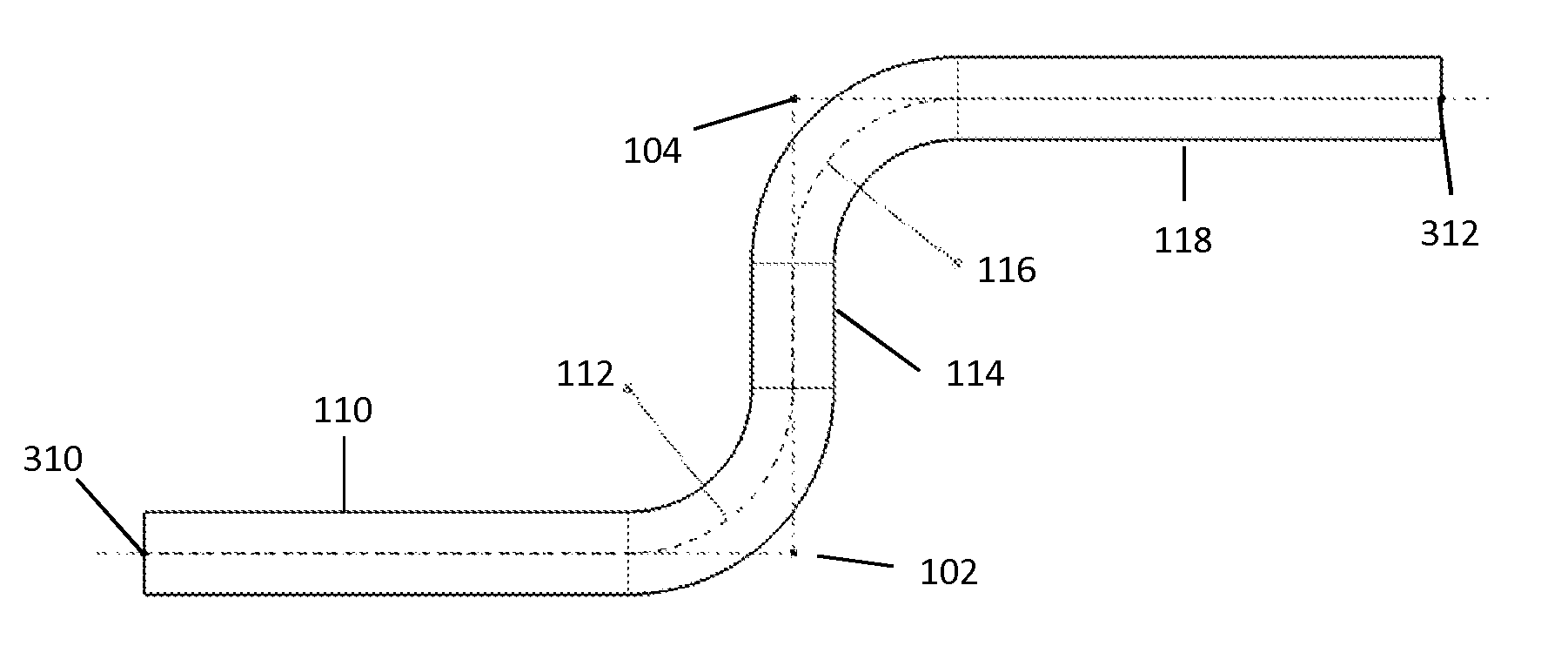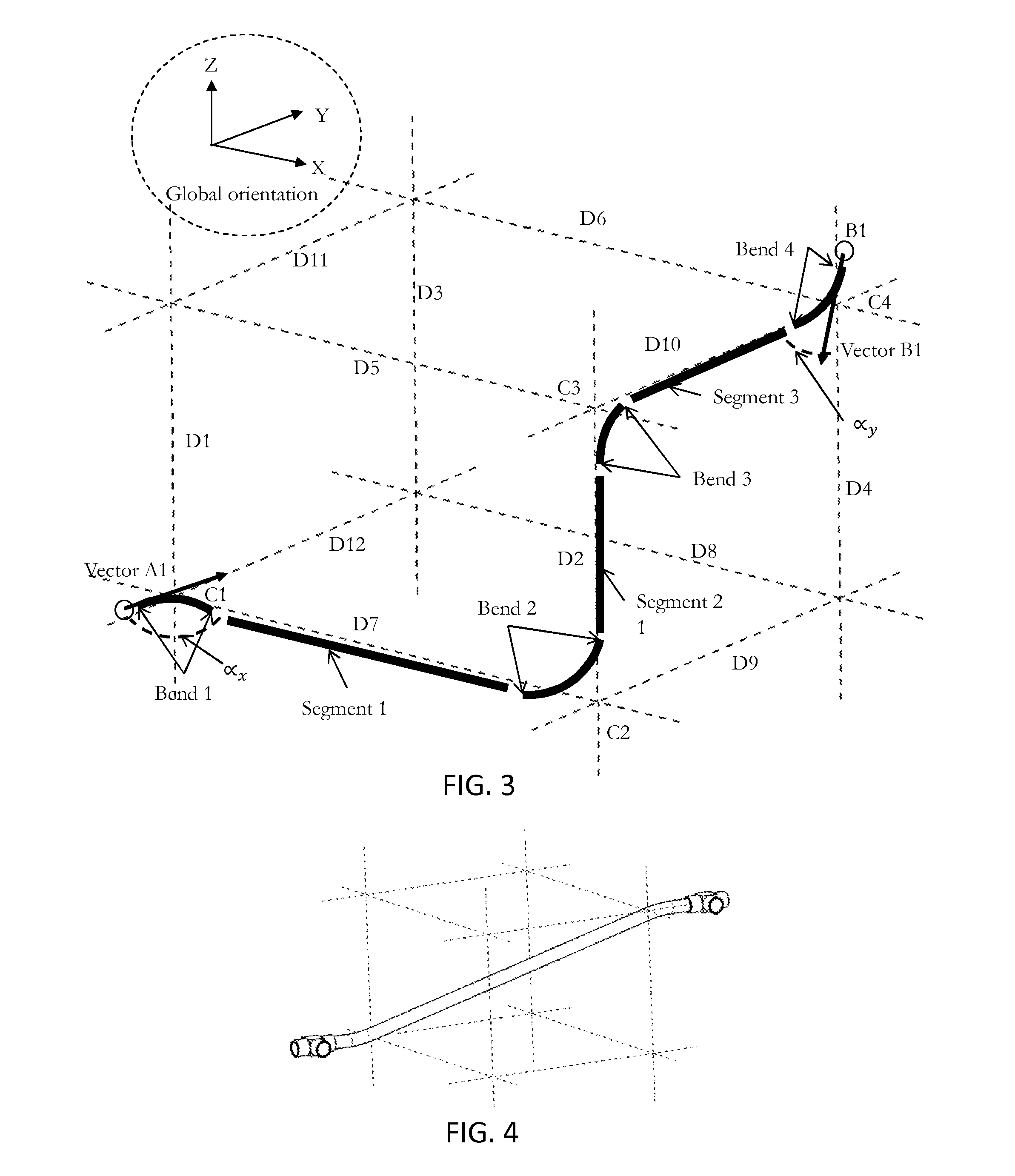Design of a path connecting a first point to a second point in a three-dimensional scene
a three-dimensional scene and design technology, applied in the field of computer programs and systems, can solve the problems of not helping the designer to select the right path quickly, designer cannot check the clash with the context with the right precision, and existing solutions suffer from several drawbacks
- Summary
- Abstract
- Description
- Claims
- Application Information
AI Technical Summary
Benefits of technology
Problems solved by technology
Method used
Image
Examples
Embodiment Construction
[0045]A description of example embodiments of the invention follows.
[0046]The teachings of all patents, published applications and references cited herein are incorporated by reference in their entirety.
[0047]With reference to the flowcharts of FIGS. 26 to 28, it is proposed a computer-implemented method for designing a path connecting a first point to a second point in a three-dimensional scene. A path is a set of points connected by, but not limited to, straight line, arcs, curves . . . . A path may be represented by a polyline (also referred to as polygonal chain) that comprises a connected series of line segments. The set of points comprises at least two points, namely a first point and a second point. The first point may be also referred to as start point and the second point may be also referred to as end point. The method comprises providing a first point coupled with a first vector and providing the second point coupled with a second vector. A vector is a geometric object th...
PUM
 Login to View More
Login to View More Abstract
Description
Claims
Application Information
 Login to View More
Login to View More - R&D
- Intellectual Property
- Life Sciences
- Materials
- Tech Scout
- Unparalleled Data Quality
- Higher Quality Content
- 60% Fewer Hallucinations
Browse by: Latest US Patents, China's latest patents, Technical Efficacy Thesaurus, Application Domain, Technology Topic, Popular Technical Reports.
© 2025 PatSnap. All rights reserved.Legal|Privacy policy|Modern Slavery Act Transparency Statement|Sitemap|About US| Contact US: help@patsnap.com



